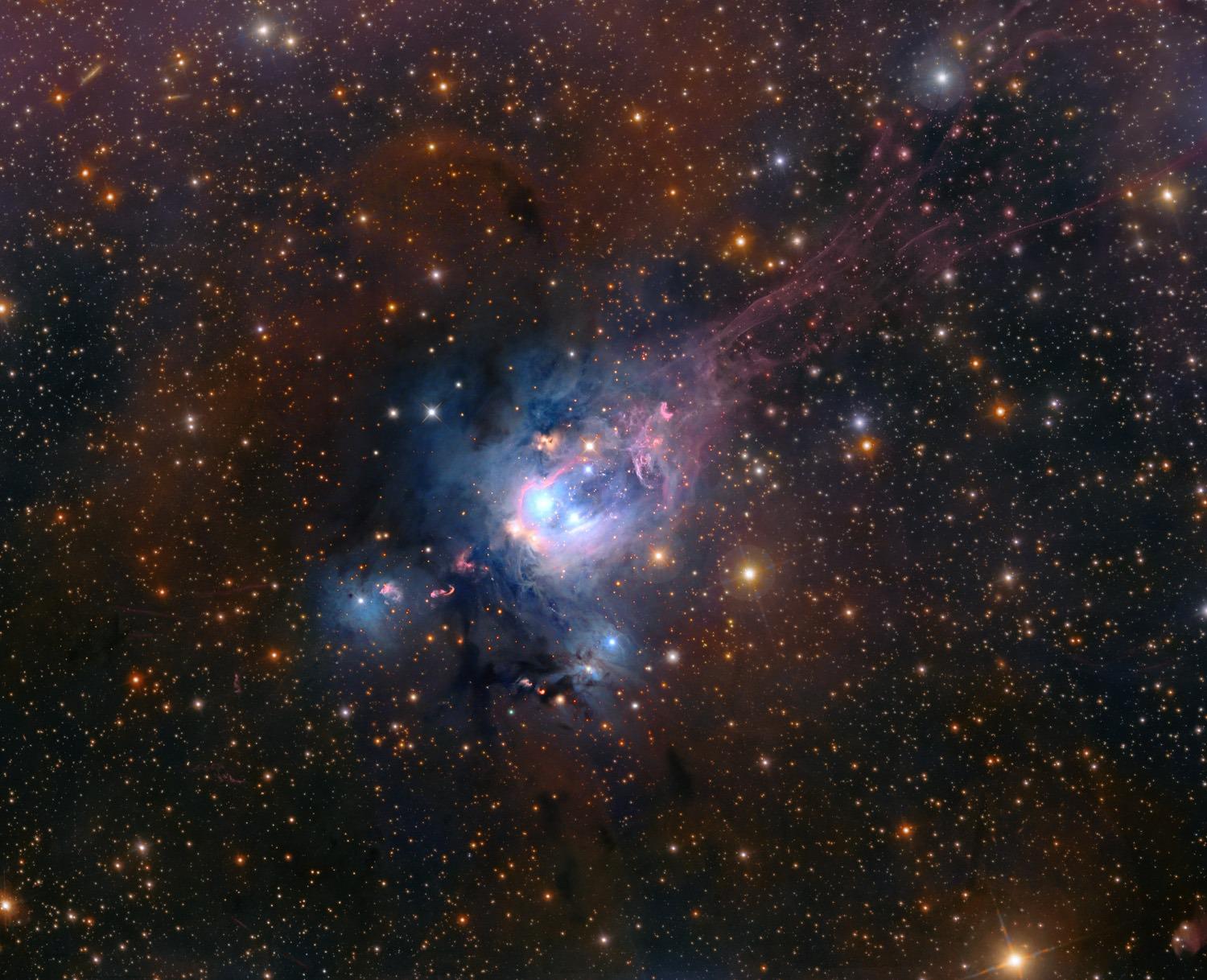NGC 7129 is a fascinating and terribly lovely object. It’s a stellar nursery, a site of active star formation, buried deep within an invisible cloud of very cold molecular gas and dust. Luckily for us, a handful of massive stars were born near the edge of this cloud, carving a blister in its side and exposing their fierce light and beauty to us:

Robert Gendler, Roberto Colombari, Eric Recurt, Adam Block
Holy wow! That image is a combination of observations using the giant 10-meter Subaru telescope, the 0.81 meter Schulman Telescope (from my old friend Adam Block), and a 35 cm telescope, all of which were processed by Robert Gendler and Roberto Colombari.
It’s a spectacular photo to be sure, but there’s a lot of science in it, as well as a surprise.
Remember, what you’re seeing is a small part of a much larger complex of gas and dust, with only this local volume illuminated by the stars within. The brightest, most massive stars being born there are blue, and the blue glow you see is light reflected and scattered by grains of dust, so we call it a reflection nebula. That’s a sure sign you’re seeing young stars; blue stars don’t live long, so they must be young, and the regions where they’re born are typically choked with thick dust clouds.
Some of the dust is so thick it blocks the light coming from behind it, which is why there’s a collar of blackness on the lower left side of NGC 7129, separating the main nebula from the circular blue reflective patch caused by another star. The young stars—only a few million years old at most, a tiny fraction of the Sun’s 4.5 billion year age!—can also focus twin beams of matter blasting outward from their poles as they form. This slams into the material around them, forming those small curved arcs you can see here and there in the nebula. Those are like the bow waves coming off ships as they ply the ocean.

NASA/JPL-Caltech/T. Megeath (Harvard-Smithsonian CfA)
What amazes me most about this image though are those pinkish tendrils to the upper right. Gendler notes they’ve never been seen before! I searched the professional journals and see no mention of them, which supports that claim. I may have missed something, I’ll admit, but given what they mean, I’d think someone would have mentioned them if they’d seen them in the past.
I can’t be 100 percent sure, but I strongly suspect this tendrils are literally a blowout: gas flung outward by the newborn stars, accelerated to high speeds, blasting out and piercing the thick veil of gas and dust surrounding the stars. It’s almost literally like a popping balloon, with the gas inside flowing out of the hole.
We’ve seen blowouts in other nebulae (such as Sharpless 2-308, the Swan Nebula, IC 5146, and the magnificent Orion Nebula … and yes, you really want to click those links), and even in the Milky Way galaxy itself. It means that the expanding gas from the stars found a weak spot in their cocoon, and exploited it. It’s interesting indeed that this occurs along the long axis of the bubble itself— either the stars are blowing out gas preferentially along an axis (which is likely) or the gas around them is thinner along that long axis, making the path easier for that gas to travel. It may be a combination of both.
In many images, NGC 7129 looks like a rose bud. In this case, the analogy is apt: It’s sending its pollen out into space, where it may help form new stars!
I hope that some professional astronomers will make use of this potential discovery and take deeper images and spectra of this nebula. At a distance of roughly 3,500 light-years, NGC 7129 is relatively close and easy to study. It’s part of a much larger and vastly more complicated array of clouds, and understanding any piece of it can lead to a better grasp of the whole.
Or, in this case, the hole.